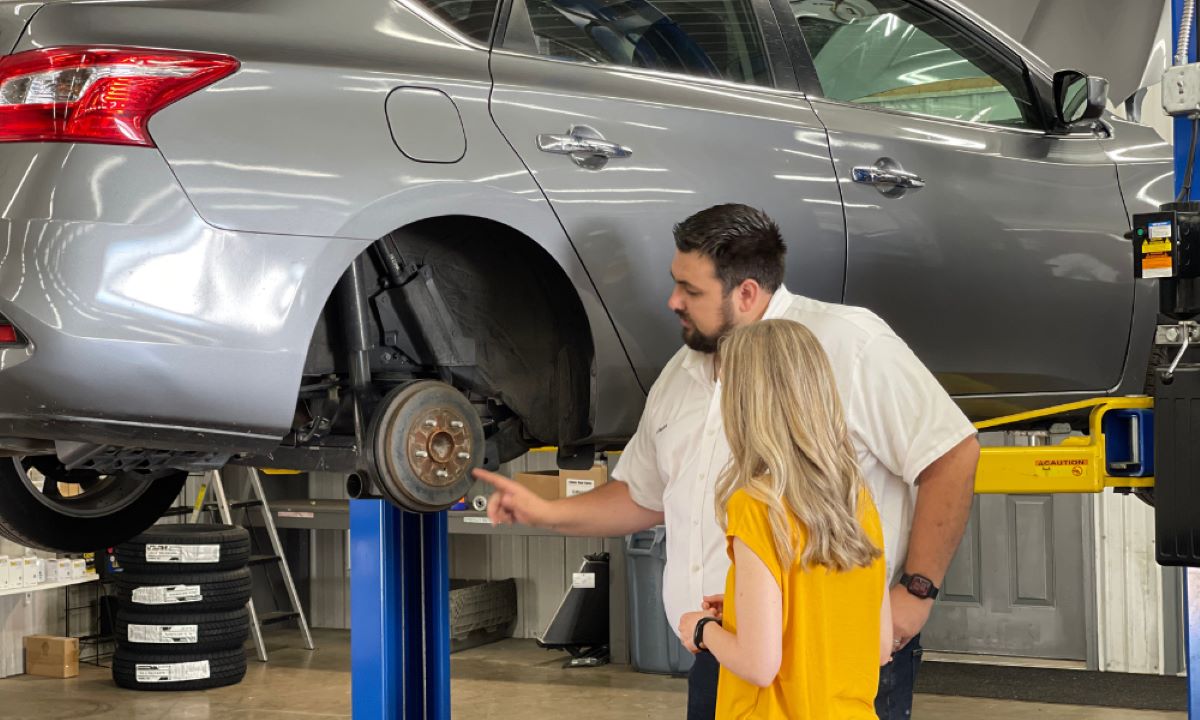Consider this eye-opening statistic: the average cost of owning and operating a new car in 2023 was $12,182. Cars are expensive, and the financial strain extends far beyond the dealership.
With rising interest rates, expensive insurance premiums, and maintenance costs, owning a car is a significant financial commitment that can drain your wallet.
Understanding the total cost of car ownership is essential for effective budgeting and financial planning.
In this guide, we will explore the hidden costs associated with owning a car, helping you make better-informed decisions and avoid financial surprises.
Depreciation From Day One
Depreciation is often the largest hidden cost of car ownership. A new car can lose a significant portion of its value in the first few years of ownership, which directly impacts its resale price.
Within the first year, many cars can lose up to 20% of their value. After that, they may continue to lose approximately 15% more each year until they are about five years old.
After this point, depreciation slows, but by then, the car has lost over 50% of its original value.This is a major reason why financing a new car for more than 60 months (5 years) is generally discouraged.
Insurance Premiums
Insurance premiums are a significant ongoing expense, especially for younger drivers, those with less-than-perfect driving records, or owners of cars that are expensive to insure. Even credit scores can influence auto insurance rates.
Also Read: Smart Ways to Save on Car Insurance Without Sacrificing Coverage Amid Rising Premiums
Car insurance rates surged by 24% in 2023, driven by increasing repair costs, natural disasters, and more frequent accidents.
Rising repair costs are largely attributed to the higher prices of cars that automakers have worked to normalize since 2021.
How much should you expect to spend on car insurance in 2024? The national average for a full-coverage policy has reached $2,019 annually, which breaks down to about $168 per month.
Minimum liability insurance costs about $1,154 annually, but it offers far less protection in the event of an accident.
Each year, auto insurance rates continue to climb faster than wage growth. This means you’re not the only one noticing that insurance premiums are consuming a larger portion of your paycheck.
Maintenance and Repairs
Routine maintenance is necessary to keep a car running smoothly, but these costs can accumulate quickly. Unexpected repairs can also be especially expensive and are often unpredictable.
In 2023, the average driver spent 9.83 cents per mile driven on maintenance, repairs, and tire replacements, according to AAA.
For someone driving the average 15,000 miles per year, this totals about $1,474 annually for maintenance.
The cost of car maintenance is so significant to the American economy that the Federal Reserve monitors it. Their data shows that motor vehicle parts and equipment costs have surged since the end of the COVID-19 pandemic.
It’s important to note that maintenance costs vary by vehicle make and model.
You can potentially avoid the most costly repairs by selecting a more reliable vehicle with cheaper parts and repair costs. Use our FREE tools to compare auto maintenance costs.
Fuel, No Matter What Kind
Fuel costs are a regular expense that can fluctuate significantly. For those who drive more frequently or own less fuel-efficient cars, this cost can become substantial.
The average car in America is expected to get 25 miles per gallon in 2024. At $3.50 per gallon, the typical American driver traveling 15,000 miles annually will spend about $2,100 on fuel each year.

However, hybrid vehicles, which can often achieve over 50 miles per gallon, may reduce this expense by half.
What about electric vehicle fuel costs? Charging at home is typically the most cost-effective option, certainly cheaper than gasoline.
However, public charging stations can be much more expensive. At typical American electricity rates, it costs between $10 and $20 to charge an EV battery from empty to full at home.
Public fast chargers, however, vary significantly in price compared to gasoline. A reasonable rate for EV charging is generally under $0.45 per kilowatt-hour of electricity, but some charging stations charge up to $0.65 per kWh.
It’s akin to gas prices fluctuating between $3.00 and $5.00 per gallon in the same city! Use PlugShare to check EV charging costs in your area.
Considering that the average EV battery has a 75 kWh capacity, public charging can be just as expensive as gasoline, if not more costly per mile driven.
The silver lining is that most EV owners charge their vehicles at home, saving hundreds of dollars annually compared to fueling a gas-powered car.
Financing: Higher Car Prices Mean Higher Interest Payments
Interest payments on auto loans contribute significantly to the overall cost of owning a car. Longer loan terms, higher car prices, and today’s elevated interest rates all contribute to higher interest payments on auto loans.
In 2024, the average interest rate for a new car loan is 9.72% APR, while used car loans average 14.10% APR.
Financing a new car over a typical 60-month term could result in paying thousands of dollars in interest, unless you capitalize on special financing offers for new cars.
Extending the loan term to 72 or even 84 months can cause interest costs to skyrocket, making the car much more expensive in the long term.
This underscores the importance of shopping around for the best financing rates and considering shorter loan terms if possible. It’s even better if you can take advantage of low-APR financing offers available today.
Also Read: How High Car Insurance Rates Are Driving People Into Financial Trouble in the U.S.
Our free auto loan payment calculator can help you calculate the total interest paid over the life of your car loan.
Adjust the interest rate to see how much of a difference APR can make to your monthly payment and the total cost of ownership!
State and Local Taxes
Sales tax, registration fees, and annual renewal fees can pile up, especially if they aren’t factored into the budget. Each state has its own tax and fee structure, which can vary significantly.
Some states even impose annual property taxes on vehicles, adding another layer of cost to car ownership.
Additionally, many states charge extra annual registration fees for electric and hybrid vehicles to make up for lost gas tax revenue. These fees can range from $50 to over $200 per year, depending on your location.
Being aware of these costs in advance can help you budget more accurately and avoid unexpected surprises. Be sure to research your state’s specific vehicle tax and fee structure before purchasing a car.
The Total Cost of Car Ownership Is Rising
Car ownership comes with many hidden expenses that can quickly add up. From depreciation and insurance premiums to maintenance, fuel, financing, and taxes, these costs can significantly impact your budget.
In 2024, rising insurance premiums and escalating maintenance costs are adding to the overall cost of owning a car. Budgeting for these expenses is more important than ever.
By understanding these hidden costs, you can make more informed decisions and better prepare for the true financial impact of car ownership. Doing your due diligence and researching all potential expenses will save you from unexpected financial strain in the future.

